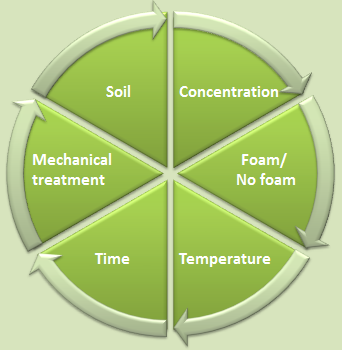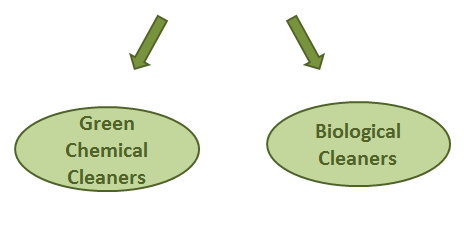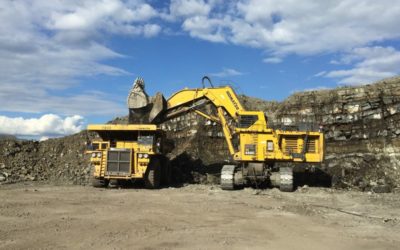Cleaning Chemicals
We create our own environment, so we get exactly what we deserve. Chemicals are needed for a variety of reasons, but it is our responsibility to ensure that we don’t damage our surroundings.
Aesthetics, safety, hygiene and maintenance – CLEAN + GREEN = enviroteQ
Important cleaning parameters when using cleaning chemicals:

STEPS TO CLEANING
• Understand the type of soiling (example oil)
• Understand the type of surface (porous, hard)
• Type of surface.
Actions that follow – make the right decision on the type of cleaning chemical to be used and the application:
• Concentration
• Foaming / non foaming
• Temperature
• Time required
• Mechanical actions.
Why use surfactants in cleaning?
The main tasks of surface active agents for cleaning chemicals are to:
• Reduce the surface tension of the water
• Get wetting properties and to release soil from surfaces
• Emulsify fatty material
• Disperse solid particles and pigment (“dirticles”).
This is the most expensive raw material used in cleaning and industrial chemicals and when it comes to Environmentally Friendly Surfactants, it is even more expensive. This is where you will find that some manufacturers and suppliers of cleaning chemicals will dilute products heavily to save cost and be more competitive. In the long run, they are only costing the user more money, since you have to use more chemicals to get the job done, as well as costs the planet more in using scarce resources:
• More raw materials
• More packaging
• Energy
• Pollution.
What is Green?
Green is associated with
• Regeneration
• Fertility
• Re-birth for its connection to nature.
The green movement refers to environmentally-friendly products.
Sustainability – The capacity to endure. In ecology, the word describes how biological systems remain diverse and productive over time.
Renewable resource – A natural resource is a renewable resource if it is replaced by natural processes at a rate comparable or faster than its rate of consumption by humans.
Environmentally-friendly – Also known as eco-friendly, nature-friendly and green.
All these terms refer to goods and services, laws, guidelines and policies considered to inflict minimal or no harm to the environment.
Carbon Footprint
Carbon footprint means the total set of greenhouse gas (GHG) emissions caused by an organisation, event or product. For simplicity’s sake, it is often expressed in terms of the amount of carbon dioxide, or its equivalent of other GHG’s, emitted.
Biodegradable Industrial cleaning chemicals
A biodegradable product has the ability to break down, safely and relatively quickly, by biological means, into the raw materials of nature and disappear into the environment.
What is Green Cleaning?
Green cleaning means the use of those products and services that have a lesser or reduced impact on human health and the environment when compared with competing products or services that serve the same purpose.
• Save the planet – preserve the environment
• Protect the health of people and animals
• Increase the lifespan of facilities.
Who is going green?
Only some people are going green, and then not fully. Due to the perceived cost of going green and the notion that green products are not as good as bleaches, acids and chemicals that are strong, foam more and have a particular perceived violent attack on dirt.
Corporations and households tend to separate processes where, if they decide to go green, they will go green only in the critical processes, example where there could be contact with food or critical hygiene interaction.
Types of GREEN Cleaners / Industrial cleaning chemicals

enviroteQ Cleaning Chemicals:
• Green chemical cleaners
• Disinfectant – general purpose disinfectant cleaner
• Dispenser liquid hand soap
• Dishwashing liquid
• GP cleaner – medium duty degreasing detergent
• Maxi – high grade degreasing detergent
• Neutral detergent- medium grade neutral detergent
• Enzyme cleaner – general purpose with surfactant
• Enzyme D-odour – for disinfecting & odour elimination
• Wash – phosphate free micro powder in refill bag
• Wash – phosphate free micro powder in buckets
• DG – catholyte cleaner
• NTL – acolyte disinfectant.
What was eliminated from the enviroteQ range?
• “Butyl cleaner” (2-butoxyethanol)
• Nonyl phenol ethoxylate surfactants
• Phosphates
• Formaldehydes.
Biological Cleaners – Bio-teQ Range (Industrial Cleaning Chemicals)
Enzymes and Microbes
Enzymes – An enzyme is a catalyst that breaks up long, complex waste molecules into smaller pieces, which can then be digested directly by the bacteria.
Microbes – Microbe = bacteria. The bacteria selected for enzyme cleaners consume organic waste thousands of times faster than the bacteria that are naturally present in the waste.
Why use enzymes?
• Non-toxic
• Non-irritating
• Non-gaseous
• Non-flammable
• Non-pathogenic
• Non-hazardous.
Four basic classes of Enzymes most relevant to cleaning and cleaning chemicals:
• Lipase breaks down fats and greases
• Protease breaks down protein
• Cellulase breaks down cellulose such as wood, cotton and paper
• Amylase breaks down carbohydrates and starches.
Benefits
Microbes multiply to accommodate the volume of waste. The by-product of microbial digestion is nitrogen, oxygen, carbon dioxide and water – exactly what nature would do.The microbes and enzymes are self-limiting and fully biodegradable.
Bio-teQ Enzyme Cleaner (Industrial Cleaning Chemical)
• Rapidly digests a broad spectrum of organic waste
• Waste begins to digest immediately on contact
• When waste is digested the microbes and enzymes are self-limiting and fully biodegrade
• Rapidly digests FOG’s (fats Oil & Grease) reducing volume in grease traps and the need to engage pump-out services
• Digests amines which are the compounds that attract many insects such as flies and cockroaches
• Safe for the environment – non-polluting, organic and contains renewable ingredients
• Addresses Occupational Health & Safety issues by removing toxic chemicals and the need for hot water.
Bio-teQ Enzyme D-odour
• Has the ability to rapidly multiply providing a scalable sanitizing effect
• Possesses powerful anti-bacterial properties which remove many harmful pathogens such as e-coli, salmonella, staphylococcus, lysteria and cholera
• Cleans drains of non-living organic matter and fat build up, preventing blockages and malodour, thus reducing costs of plumbing call-outs
• Does not mask or cover-up odours instead removes the molecules that are the cause of a broad spectrum of malodours
• Safe to use, non-corrosive and non-pathogenic.




0 Comments